The 741 is easily the most iconic opamp ever made. Designed by Dave Fullagar at Fairchild as a user-friendly, general-purpose op amp, it became a huge hit with electronic designers. Billions have been produced since its introduction in 1968, by a wide variety of manufacturers. What’s perhaps even more amazing is that it’s still being produced today by TI and ST, despite being hopelessly out of date. Fifty years of development has produced a wide array of opamps that are faster, more accurate, less noisy and less power-hungry than the 741. Yet somehow, this classic part keeps hanging on, basically unchanged for over half a century.
Today we’ll have a look at the insides of a couple of different 741 chips. Although it is entirely possible for manufacturers to just copy the exact layout, especially for something as old and simple as this, it turns out that each company actually makes its own unique design.
National Semiconductor LM741CN
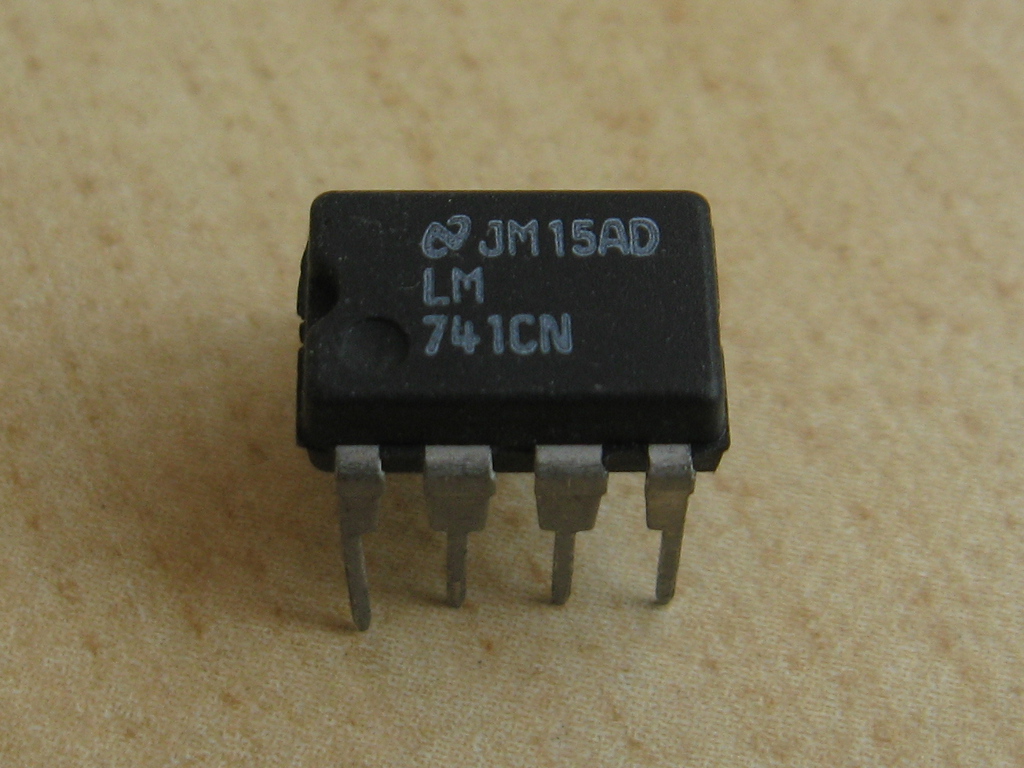
National has been manufacturing this device for ages, as part of their LM (Linear Monolithic) range of analog ICs. Even after National’s acquisition by TI in 2011, it has remained in production alongside TI’s own uA741.
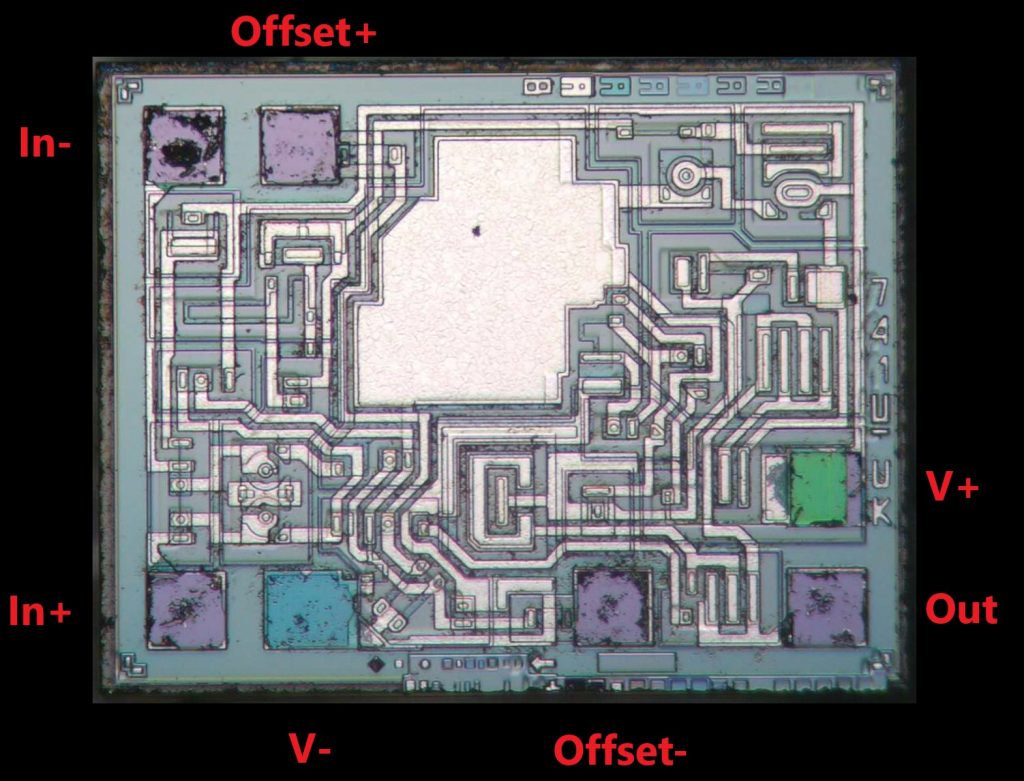
The layout is very compact; the total die size is only 1100 by 800 microns. Some test structures are visible along the lower edge. The ID on the right edge of the die says “LM741U” and “UK”, the latter probably referring to National’s fabrication plant in Greenock. Some of the PNP transistors have circular emitters; this improves their matching properties and increases their breakdown voltage.
Texas Instruments uA741CP
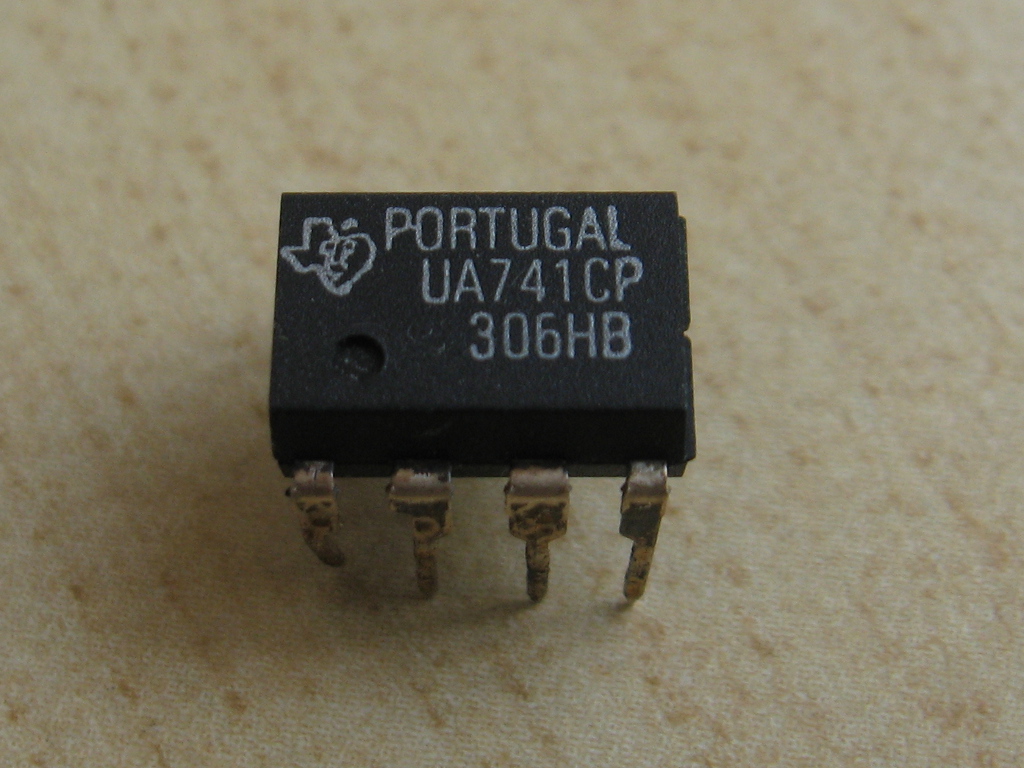
TI is currently the largest player in the analog IC market and has been producing its uA741 for a long time. As far as I can tell, they’re one of only two manufacturers who are still making it today. They even make two different versions: both their own and the former National part.
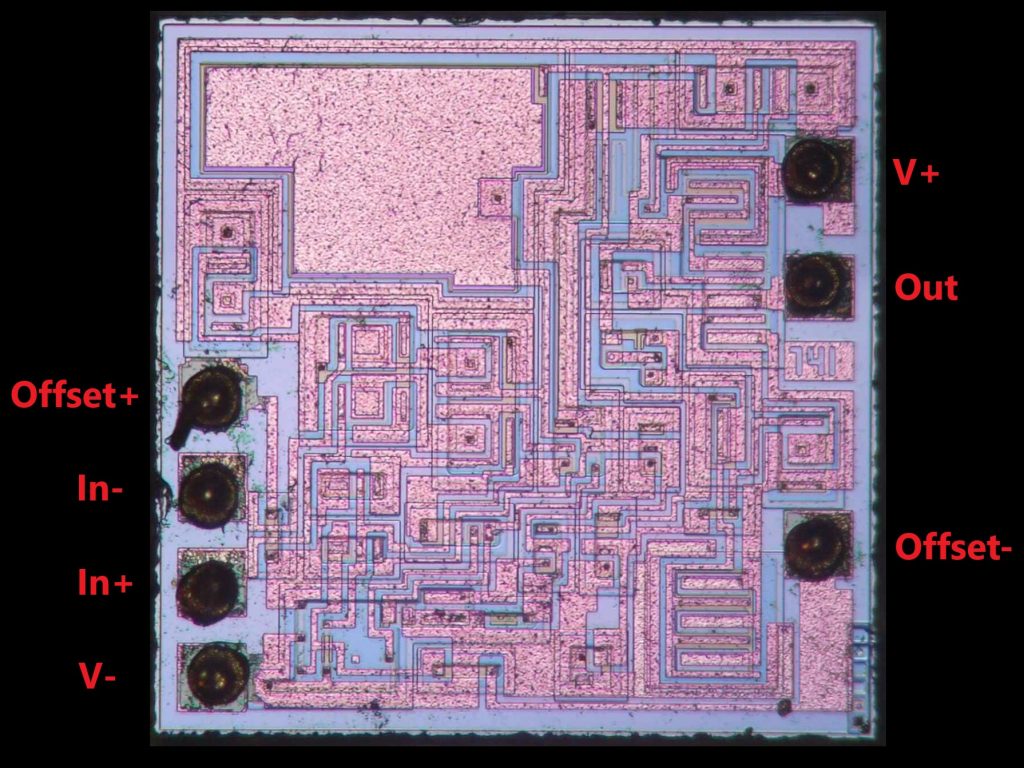
The die has no markings, apart from a little “741” label on the right edge. All transistors have square emitters. At 1.1 by 1.1 mm it is not extremely large.
Signetics UA741CN
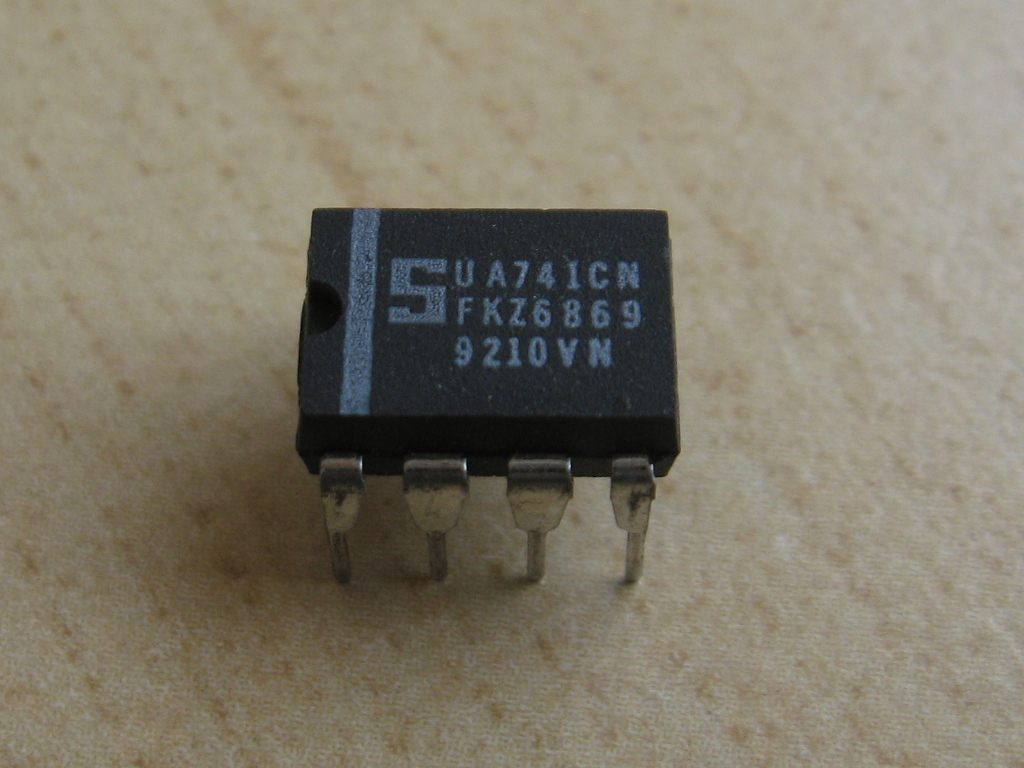
Signetics was an American manufacturer of ICs, most famous for their 555 timer IC. Like most IC manufacturers in the 70s and 80s, they also had a version of the 741 in their catalogue. The Signetics company was acquired by Philips in 1975, but kept manufacturing chips under their own name until the early 90s.
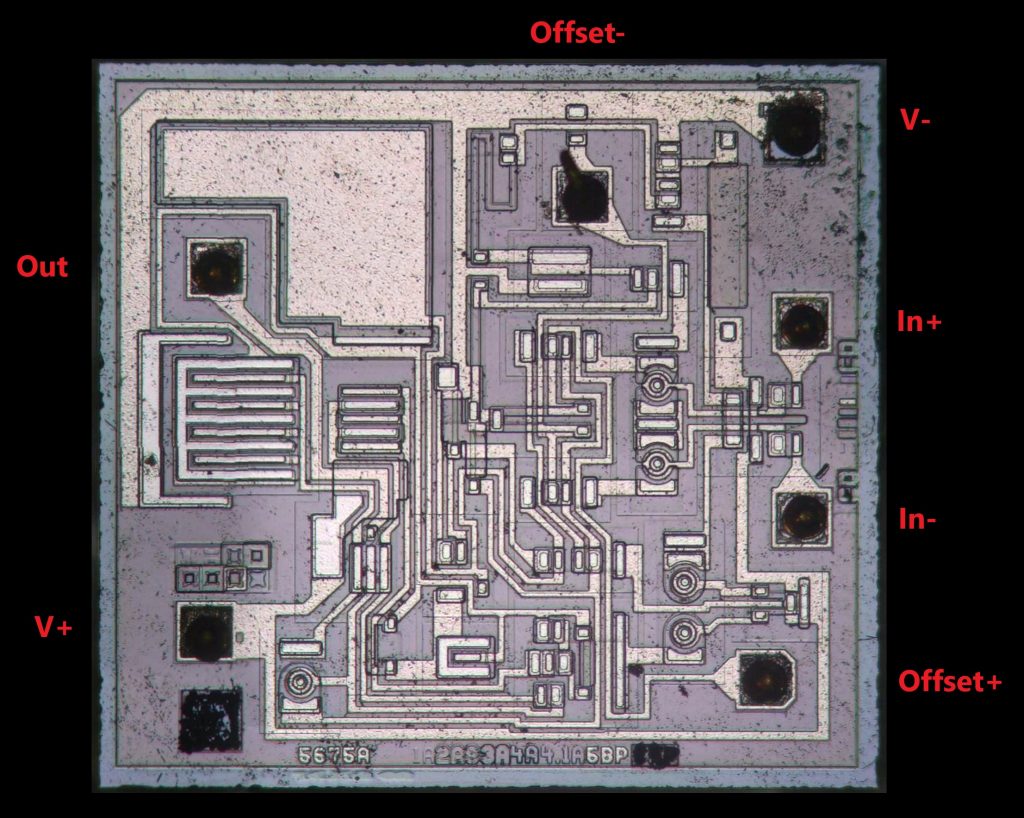
This chip has quite a bit of empty space, something you’d normally try to avoid because every square micron costs money. And this isn’t a small die either: 1.4 by 1.3 mm makes it the second-largest of the bunch. However, I really like the way this chip’s input stage has been laid out: in the middle of the die, with very nicely symmetric structures. The layout as a whole is clear and logical, but there are no markings to identify the device or its manufacturer. Which is strange, given all the empty space. There is also an unused bond pad in the bottom-left corner.
ST UA741CN
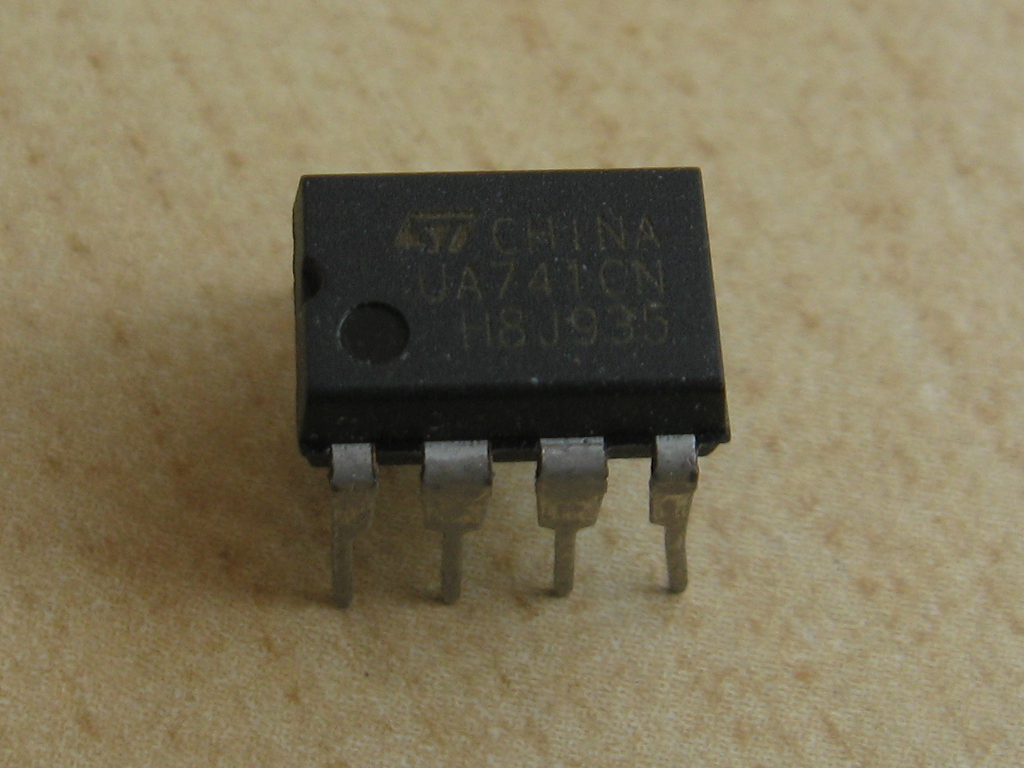
ST, a French-Italian manufacturer, also makes a version of the 741. Like TI, they still produce it to this day.
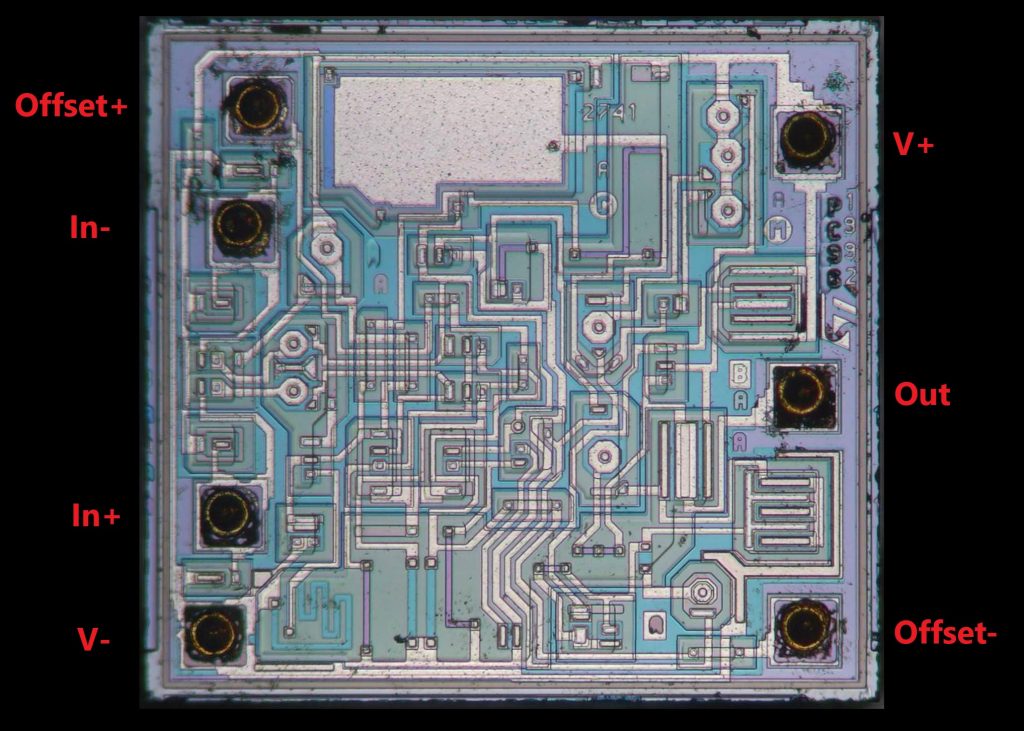
ST is the only one who bothered to include their logo, a production date (1992) and several other identifiers. The high resolution which which these labels were drawn shows that this chip was made in a rather advanced process. The layout also looks much more modern than the others, and has fancy octagonal PNP emitters. However, the layout isn’t as clean as it could be: there are quite a few places where two metal lines cross and the designers had to tunnel one below the other using a diffusion resistor. That adds resistance to the wire and takes a lot of space, and with a die area of 1.2 by 1.2 mm it is in fact one of the largest. It makes you wonder if it wouldn’t have been cheaper to just use a two-metal process and save some space; even the most basic bipolar IC processes these days come with multiple metal layers.
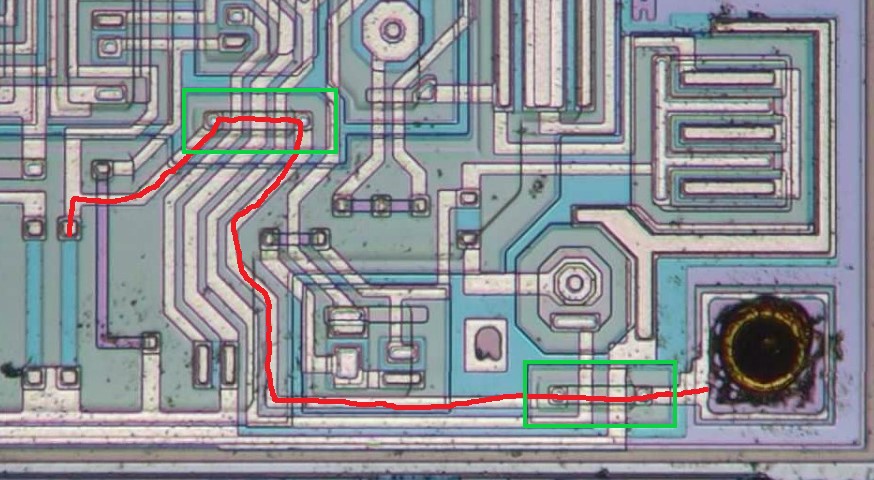
See here, for example, how the Offset- line has to use two diffusion resistors (highlighted in green) before it reaches the 1 kOhm resistor on the far left.
Motorola MC1741CP1
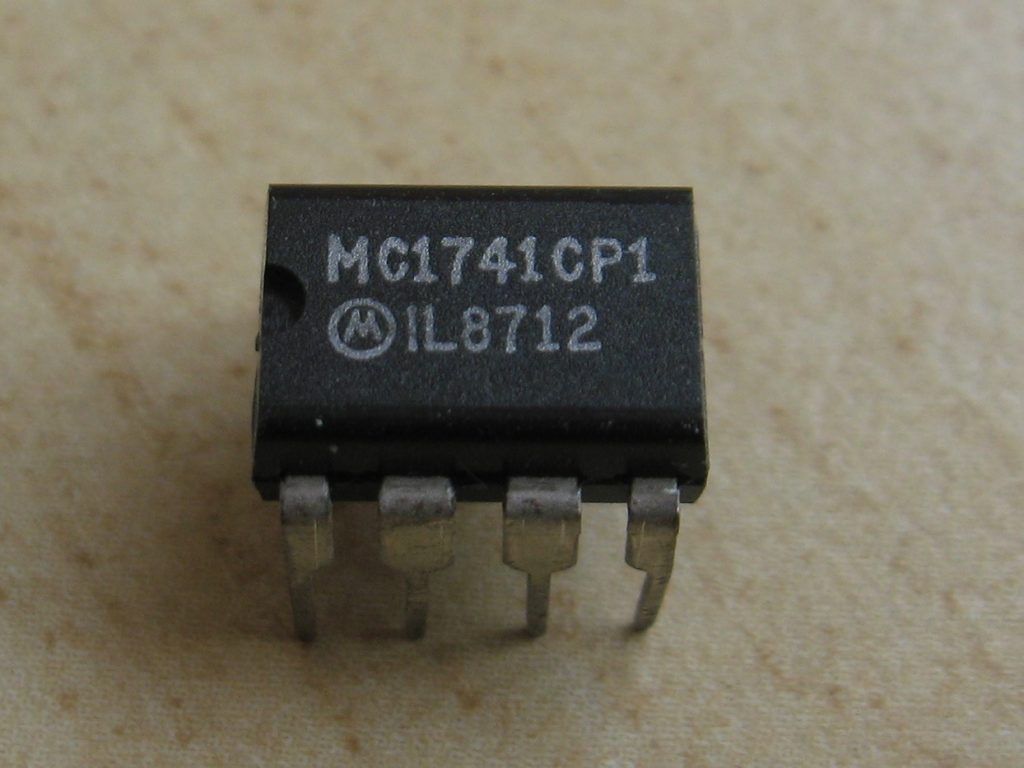
This chip was made by Motorola and has a 1987 date code. Motorola’s semiconductor division was spun out as ON Semiconductor in 1999.
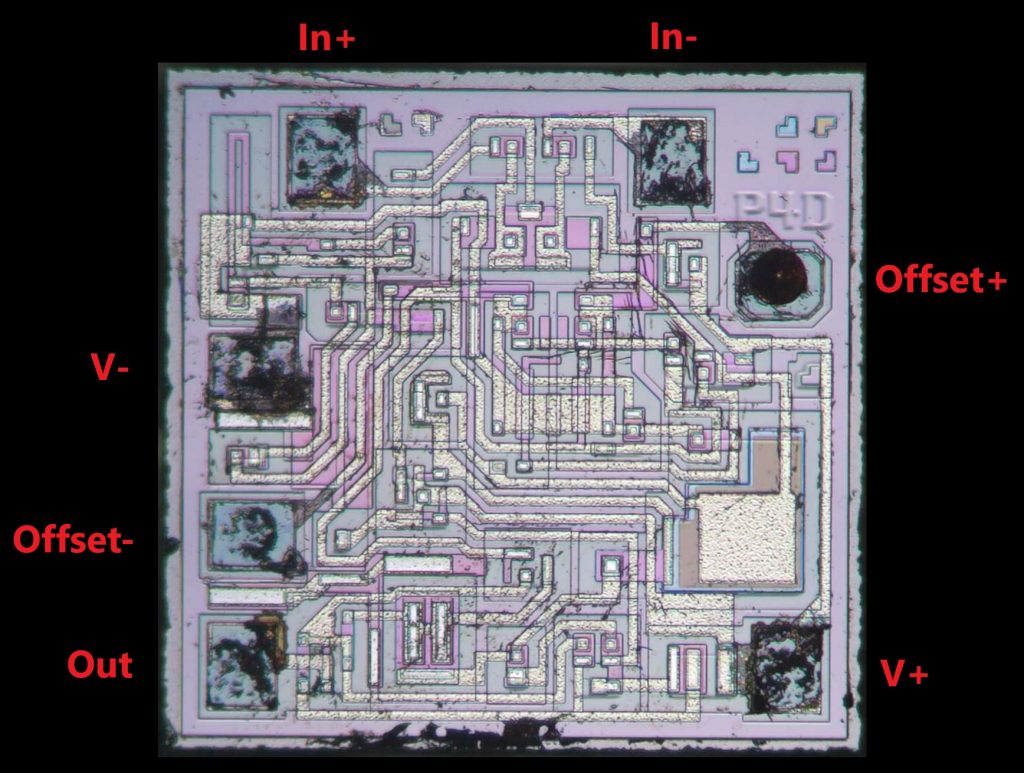
Motorola’s layout has no “741” label, nor any other recognizable identifier. The only on-die text is “P4D” written in a diffusion layer. The capacitor is very small compared to the others; perhaps Motorola used a special layer to get a high capacitance per unit area. The whole die is only 1 by 1 mm, so Motorola clearly did a good job in making a compact chip.
Unknown 741
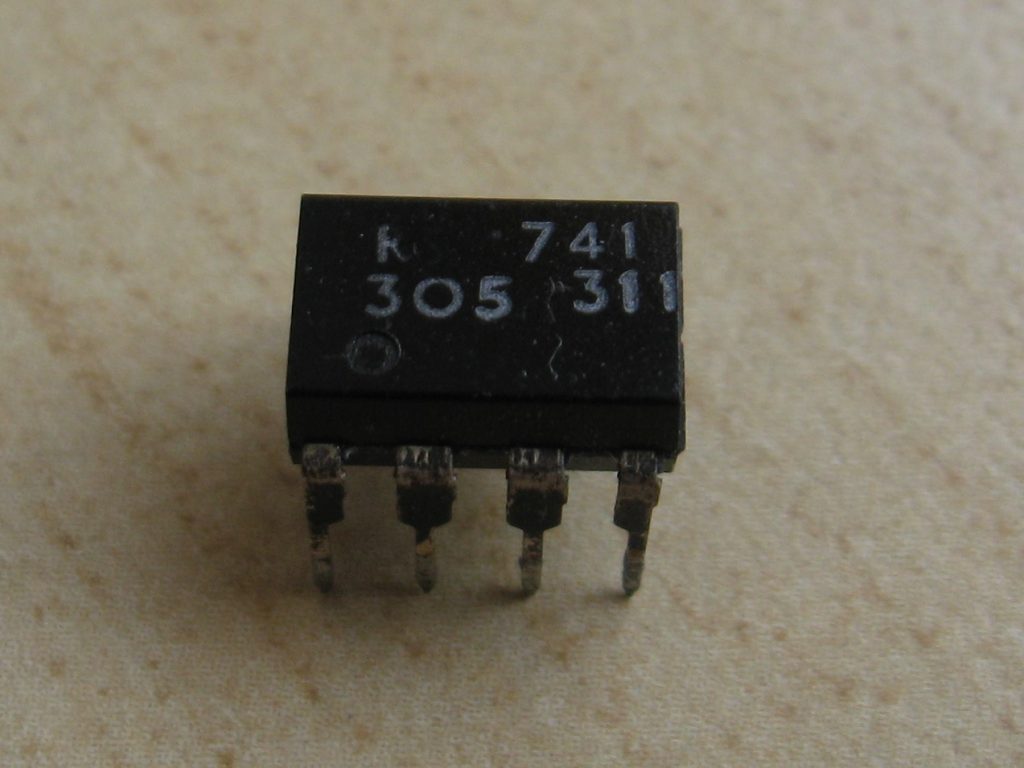
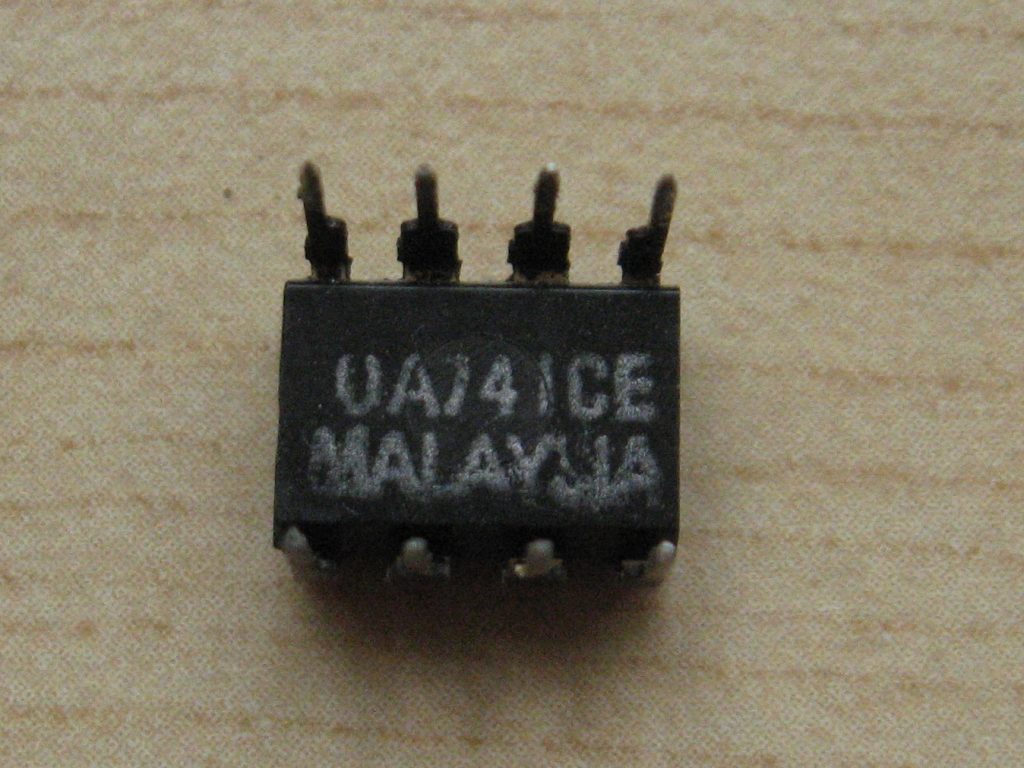
This chip is a bit of a mystery. It has no clear manufacturer’s marking other than a fading “R”, and on the bottom “UA741CE MALAYSIA”. The type of plastic and the oxidation on the leads hint at a production date in the 70s or 80s. The number “741” clearly shows its function, but who made it and when is unclear.
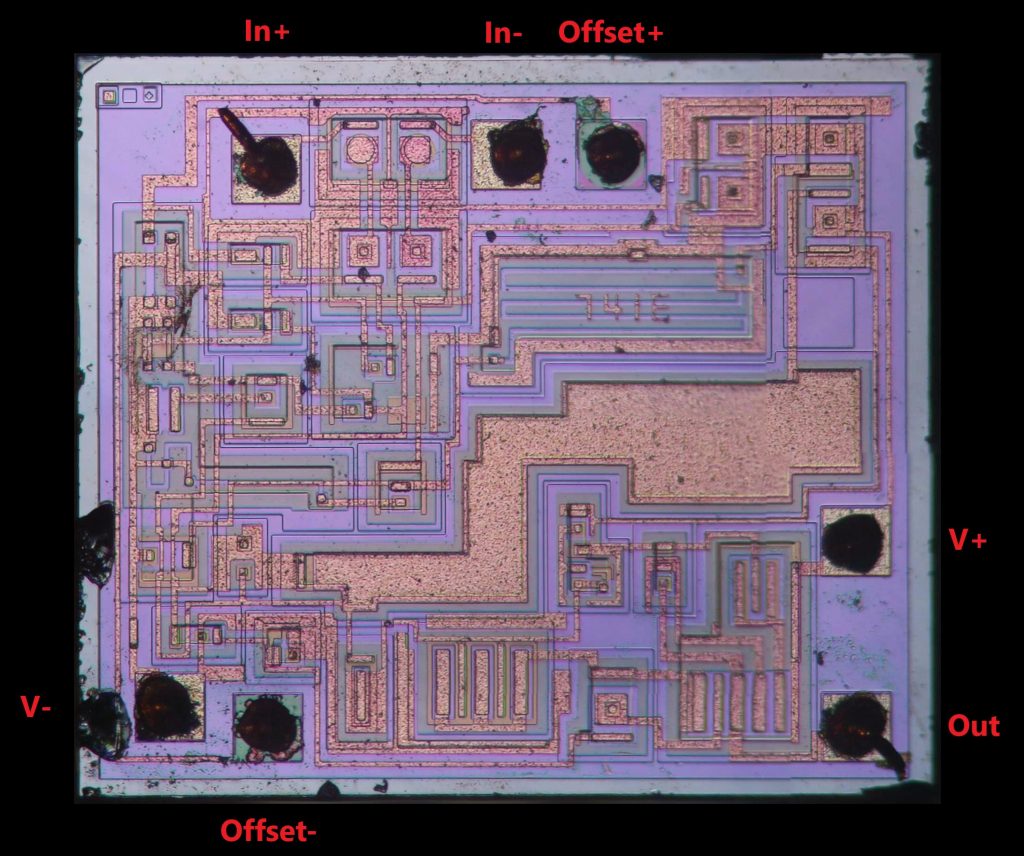
The die contains no more clues to its provenance. The only identifier is “741E”. The compensation capacitor has a very odd shape. On the right side there’s an empty space the size of a bond pad, seemingly connected to the capacitor. Perhaps a similar die was used for another opamp type with external compensation? This 741 is also by far the largest of the set we’ve looked at today: at 1.6 by 1.4 mm, it’s over 2.5 times as large as the National Semiconductor part!
Overall, I’d say it’s pretty interesting to see how much variation there is in a relatively simple IC like the 741. I’m sure there are many more variations, from different manufacturers or even from different production eras from the same manufacturer; layouts often change when a design is moved to a new production line or a different factory. Some day, even TI and ST will probably stop producing new ones, but given the billions of chips already produced, the 741 will be with us for centuries to come. Dave Fullagar must be proud!

Great job! Very interesting! Very informative!